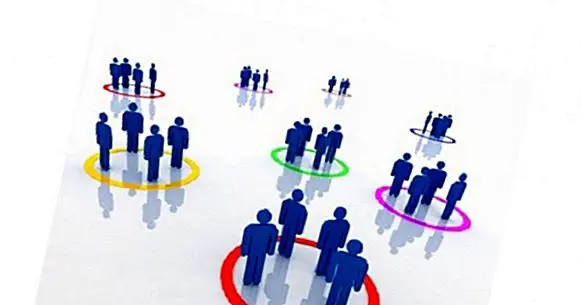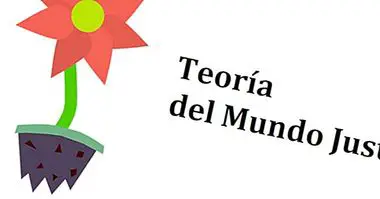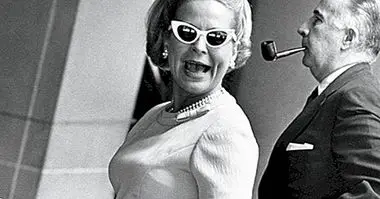Innergroup bias: what this favoritism is and how it appears
Studies on endogroup bias have allowed us to explain why and under what circumstances the members of a group tend to value more positively the group itself (the in-group), in contrast to the negative evaluation they make of a different group ( the outgroup).
Next, we will briefly review the concepts of endogroup and outgroup, and then review some of the theories that social psychology has explained the phenomenon that we know as endogroup bias .
- Related article: "What is Social Psychology?"
Endogroup and outgroup: a brief definition
It is very common to hear that humans are social beings, but what do we mean by this phrase? Usually we refer to our processes of identification and personality building have to do with the links we establish with other people.
These links take, for example, the form of rules of behavior, roles, affections, rivalries, among other elements. Not only that, but these elements allow us to recognize ourselves as competent members of a social group (that is, as people who are part of it). At the same time, allow us to establish differences with other members , and in this way, think of ourselves as individuals with unique characteristics.
The one with which we identify ourselves and of which we feel competent members, is what we know as the endogroup ("endo" means "inside"). But, for a group to recognize and identify itself as such, it is necessary to establish a difference (which can be complementary or antagonistic) to the other groups. The latter are what we know as the outgroup ("exo" means "out of"). It is then in the framework of intergroup relations where much of our psychological and social development is formed .
- Maybe you're interested: "Stereotypes, prejudice and discrimination: why should we avoid prejudging?"
The in-group bias
The in-group bias (or in-group bias) is also called endogroup favoritism. As this last name suggests, it is the tendency to favor or value more positively the behaviors, attitudes or preferences of the members of the endogroup, in comparison with those of the outgroup. It is about establishing a favoritism towards the members of the endogroup , although this implies a detriment to the characteristics of the outgroup.
As it is easy to imagine, the latter can have important effects on discriminatory attitudes and behaviors, that is, on a psychosocial rejection towards the outgroup. And, in contrast, an estimate or overestimates the in-group. But not necessarily: to explain this, some theories of social psychology have distinguished between the "in-group bias" and the "out-group negativity", where the latter refers specifically to the exercise of violence and discrimination of the in-group towards the outgroup .
Although they are related, they are different phenomena, where they have to do the power relations and the majority-minority categories that are established between the endogroup and the outgroup.
To explain why this occurs, social psychology has resorted to the study of intergroup relations of categorization in the formation of identity. In other words, it has been necessary to study how identity is formed through the establishment of a series of categories, in which both the cognitive bases and the links between members of different groups participate.
Because it happens? Explanations from Social Psychology
There have been many theoretical proposals that from social psychology have explained why members of a group tend to value their own group more positively ; and how said valuation is related to the negative evaluation of the other group.
Next, we will briefly explain some of the theories that have explained the endogroup bias.
The theory of social identity and self-concept
British psychologist Henry Tajfel developed important studies on categorial perception in the 1950s. Among other things, he analyzed the effects of categorization on discriminatory behavior. Later, in the decade of the 70's, Turner and Brown reformulated these studies and finally developed the Theory of Social Identity and the Theory of Self-categorization of the Self.
In a very broad way what they did was propose that, to form an identity, It is necessary that the categorization process occurs with certain cognitive components . In other words, many of the elements that define our identity have to do with belonging to different groups and social categories.For this reason, self-concept (the image we have of ourselves) is constructed through social identity, always related to categories and roles.
Thus, self-concept and self-esteem are consolidated through identification with social groups; with which, they are a reflection of the norms and practices that are expected in a particular group. In this sense, the in-group bias occurs as a way to maintain self-esteem through the intensification of the differences between the in-group and the outgroup (what is known as accentuation principle); for that, identification with a social group and also comparison with others is necessary.
Theory of conflicts and competition
Through the Thieves Cave Experiment , Muzafer and Carolyn Sherif showed that a context of competitiveness favors the increase of hostility of the endogroup before the outgroup.
In contrast, an environment where tasks that require interdependence prevail and where members of different groups pursue common goals can reduce such hostility. According to their research, the in-group bias and the negative attitudes towards the outgroup arise when the members of the group they have to compete with limited resources .
- Maybe you're interested: "The thieves' cave experiment: creating conflicts from nothing"
Theory of the derogation of the in-group
Although the in-group bias refers specifically to the favoritism of the endogroup to the detriment of the outgroup, multicultural studies have also offered explanations about the opposite phenomenon.
That is, when the members of a group tend to value more harshly the members of the group itself and not those of the outgroup. This happens especially when the endogroup belongs to a social minority . Some research has also suggested that people belonging to more collectivist cultures tend to judge their own group less favorably than the outgroup (although they value their members individually in a positive way); and people from more individualistic cultures qualify the endogroup more positively, and more negatively to each member.
Bibliographic references:
- Scandroglio, B., López, J.S. and Sebastián, C. (2008). The Theory of Social Identity: a critical synthesis of its foundations, evidences and controversies, 21 (1): 80-89.
- Betancor, V., Leyens J-P., Rodriguez, A. and Quiles, M. (2003). Differential attribution to the endogroup and the outgroup of the dimensions of morality and effectiveness: an indicator of in-group favoritism. Psicothema, 15 (3): 407-413.
- Tejada, A., García C., and Navas, M. (2003). Inter-ethnic in-group bias test: reliability studies and evidence of validity. Psicothema, 15 (1): 101-108.



















